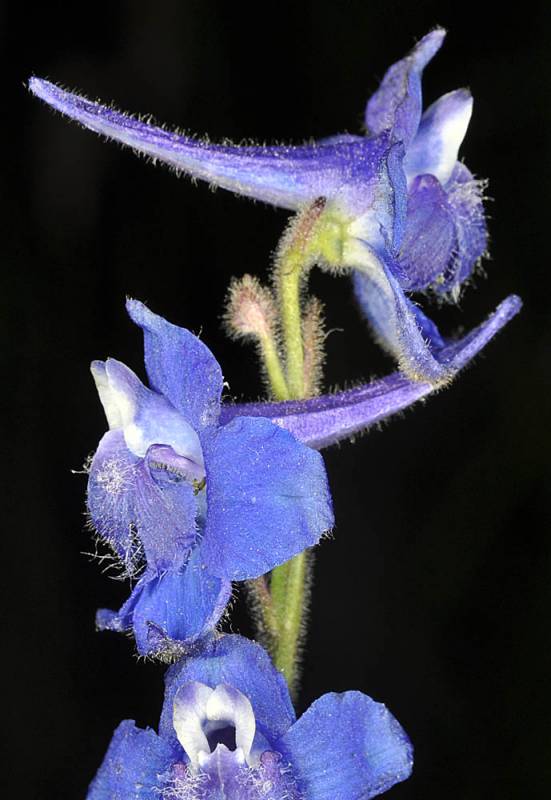Hosted by the University of Washington Herbarium, Burke Museum
Publication: Fl. N. Amer. 1: 33. 1838.
Origin: Native
Herbarium search: CPNWH
Notes: FNA3: "Delphinium depauperatum and D . nuttallianum are often found in the same meadows, with D . depauperatum occupying wetter sites, often very near streams, while D . nuttallianum is found in drier, better-drained sites. In typical years, the substrate will be dry around D . nuttallianum plants, while the substrate is damp near D . depauperatum plants as they flower. In addition, within a meadow, D . depauperatum flowers later than D . nuttallianum , so there is normally little overlap in flowering phenology of the two taxa. Although hybridization between D . depauperatum and D . nuttallianum is uncommon, hybrids do occur; they have been named D . × burkei Greene. Burke\'s specimens at Kew represent a good series of permutations of this cross and successive backcrosses.
Specimens labeled Delphinium depauperatum subsp. harneyense represent the phase with more abundant yellow-glandular trichomes in the inflorescence and slightly larger flowers. Considerable variation in these features may be found within populations. Presence of yellow-glandular hairs is generally greater in more northern populations. Type specimens of Delphinium diversifolium are intermediate in amount of glandular pubescence.
Often confused with Delphinium nuttallianum , D . depauperatum may be distinguished by its cylindric inflorescences, less dissected leaves, winged seeds, and erect fruits. These character states contrast with the pyramidal inflorescences, more dissected leaves, ringed seeds, and spreading fruits of D . nuttallianum .
Dwarfed phases of Delphinium polycladon may be confused with D . depauperatum ; they can be distinguished on the basis of bluish purple flowers, sigmoid pedicel, and prominent buds in the former, and dark blue flowers, straight pedicels, and absence of prominent buds in the latter."
Last updated 7/26/2020 by David Giblin.

